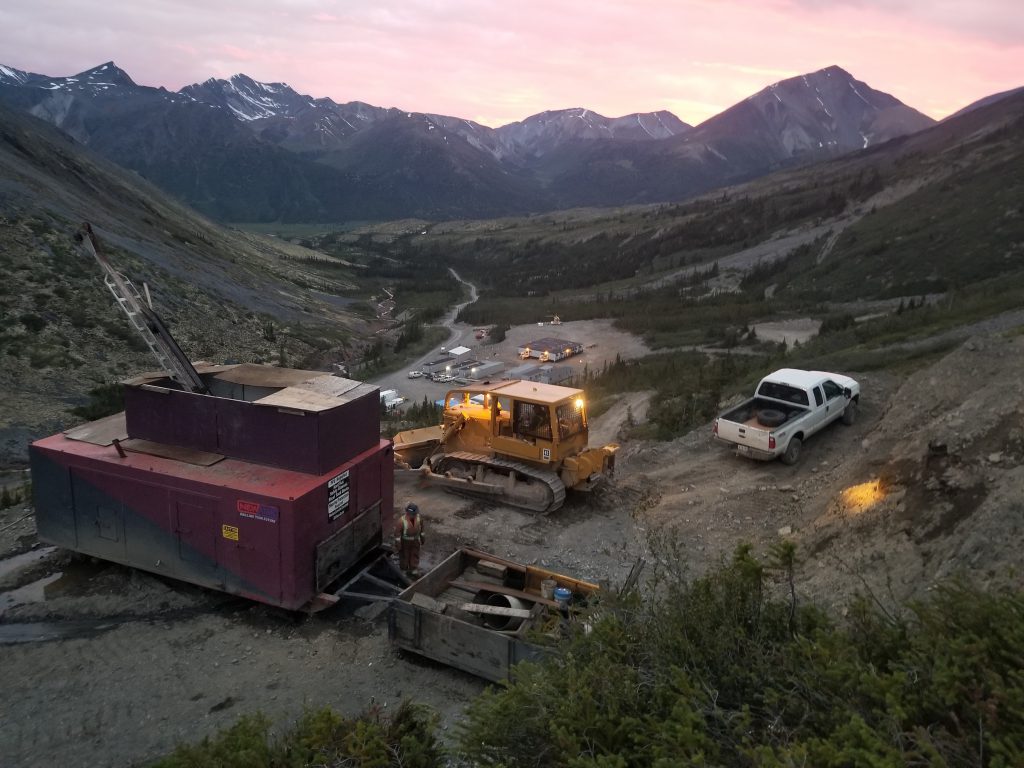Fireweed Zinc stakes Gayna River Zinc Project, Northwest Territories

Fireweed Zinc Ltd. [FWZ-TSXV; FWEDF-OTCQB; 20F-FSE] has acquired the Gayna River Zinc project by staking, located in Northwest Territories, Canada. The Gayna River project contains the Critical Metals zinc, gallium, and germanium in addition to lead and silver.
Fireweed has acquired the Gayna River project at a very low-cost by staking 128.75 km2 of mineral claims. Some 28,000 metres of historic drilling by Rio Tinto outlined impressive large-tonnage exploration targets. The geological environment has globally unique similarities to the very-high grade Kipushi mine. Recent academic studies indicate potential for very-high grade massive sulphide targets which were not recognized by previous owners.
Brandon Macdonald, CEO, commented, “The acquisition of the Gayna River project by staking is a low-cost way for Fireweed to expand our portfolio of Critical Metals projects and add some exciting exploration potential. While our focus remains on our flagship Macmillan Pass project, we are keen to explore Gayna River where we see the potential for high-grade massive sulphide mineralization. I see a similar story unfolding at Gayna River as MacPass, where Fireweed can build upon historic exploration and use modern scientific understanding of deposit genesis to unlock a potentially world-class district.”
Dr. Jack Milton, Chief Geologist, added, “We are excited to put the exploration methods we have honed so successfully at Macmillan Pass to use in a whole new search space at Gayna River. Leveraging our experience with gravity surveys, muon-tomography, and cutting-edge inversions, we can enable exploration for what has been previously difficult to find – the high-grade centers of large zinc systems. With this new technology we expect to target high-grade massive sulphides with better precision and at relatively low-cost, enabling a new wave of zinc exploration and revitalizing activity at this well-renowned zinc district.”
The Gayna River Project is located in the Mackenzie Mountains within the Gwich’in Settlement Area, the Sahtu Settlement Area, and the asserted territory of the First Nation of Na-Cho Nyak Dun. The project is approximately 180 km west of Norman Wells, 180 km north of the Macmillan Pass project, Yukon, and 150 km southwest of the winter road between Fort Good Hope and Norman Wells, NWT. Abundant zinc-lead-silver mineralization was discovered at Gayna River in the 1970s and Rio Tinto drilled over 28,000 metres in the late 1970s resulting in a large tonnage exploration target.
Rio Tinto allowed the claims to lapse believing there was low potential for a high-grade deposit at Gayna River. A recent shift in thinking behind the geological model for Gayna River shows potential for high-grade massive sulphide zones within areas that were not tested by Rio Tinto.
Mineralization at Gayna River occurs in veins and breccias in carbonate rocks similar to Mississippi-Valley-Type (MVT) mineralization, or Irish-type Zn-Pb mineralization.
The historic drilling intersected many zinc-rich intervals, such as 21.3 metres of 8.14% zinc (hole RT-75-07), and 12.2 metres of 6.65% zinc, including 6.1 metres of 11.25% zinc (hole RT-76-A20).
A 1977 estimate made by Rio Tinto within “Gayna River Project Report – 1977, for Rio Tinto Canadian Exploration Ltd.” by R.S. Hewton (1978) of potential for an Exploration Target of approximately 51 million tonnes of 5% combined zinc and lead. This estimate may be more conservatively represented as an Exploration Target of 30 to 50 Mt of 4.0-4.5% zinc and 0.0 to 0.5% lead. This potential quantity and grade are conceptual in nature.
Fireweed considers the historical estimates relevant as they demonstrate the large size potential of the hydrothermal system present at Gayna River but does not consider the estimates to be reliable determinations of potential tonnage.
Fireweed Zinc is also advancing its 100%-owned, district-scale 940 km2Â Macmillan Pass Project in Yukon, host to the Tom and Jason zinc-lead-silver deposits with current Mineral Resources and a PEA economic study as well as the Boundary Zone, Boundary Zone West, Tom North Zone and End Zone which have significant zinc-lead-silver mineralization drilled but not yet classified as mineral resources.
